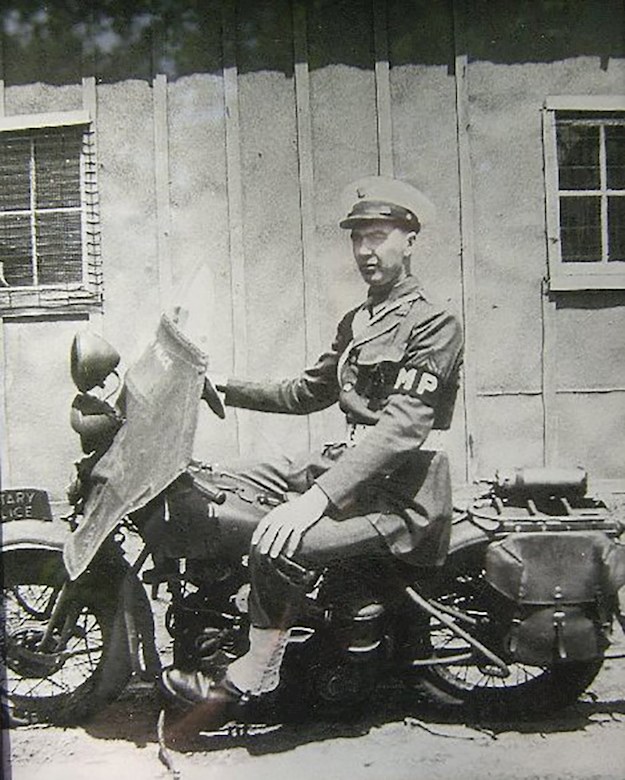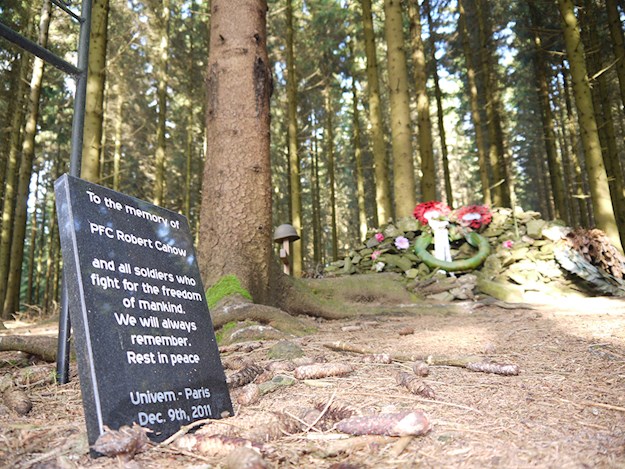Robert Cahow volunteered to save injured comrades, stepped on a mine and died. On 13 December 1944 Robert Cahow lost his life in the Hürtgen Forest. His comrades heard the detonation but couldn’t help him due to intense enemy fire. He was buried sometime later, most likely by German soldiers. Cahow’s remains were discovered in 2000. At the spot, a makeshift grave commemorates him to this day.
Robert Cahow was the eldest of eight brothers from a Wisconsin farmer’s family. During the first stages of the war he served as a Military Policeman (MP) back home. Then Robert decided to volunteer for frontline service and was transferred to Europe. He joined the 78th U.S. Infantry Division. In the autumn of 1944 his unit was involved in the heavy fighting in the Hürtgen Forest.
At one point the American forces got stuck when their advance towards the city of Schmidt was confronted with heavy resistance. The 78th Division made an effort to take the pillboxes (concrete bunkers) that dotted a strategic hill called Ochsenkopf. During the prolonged battles for these bunkers a number of Cahow’s comrades were injured. He volunteered to try and save them. During the endeavour he stepped on a mine. Other GIs weren’t able to reach Robert due to German crossfire. After the fighting was over Cahow’s body was buried in the woods, most likely by German soldiers. In this makeshift grave his remains rested for the next 56 years.
The message that Robert was missing reached his parents via a telegram. For a year the family lived in uncertainty. Then Robert was declared dead. However, what had happened remained a mystery until April 2000 when combat engineers – combing the woods for remaining land mines – found his improvised grave. Given his size of 2.01 meters he was easily identified. Though his remains were shipped to the U.S., his family still visits the Hürtgen Forest regularly. Sadly, this kind of closure has not come for every family. Hundreds of men are still missing in the Hürtgen Forest to this day.



